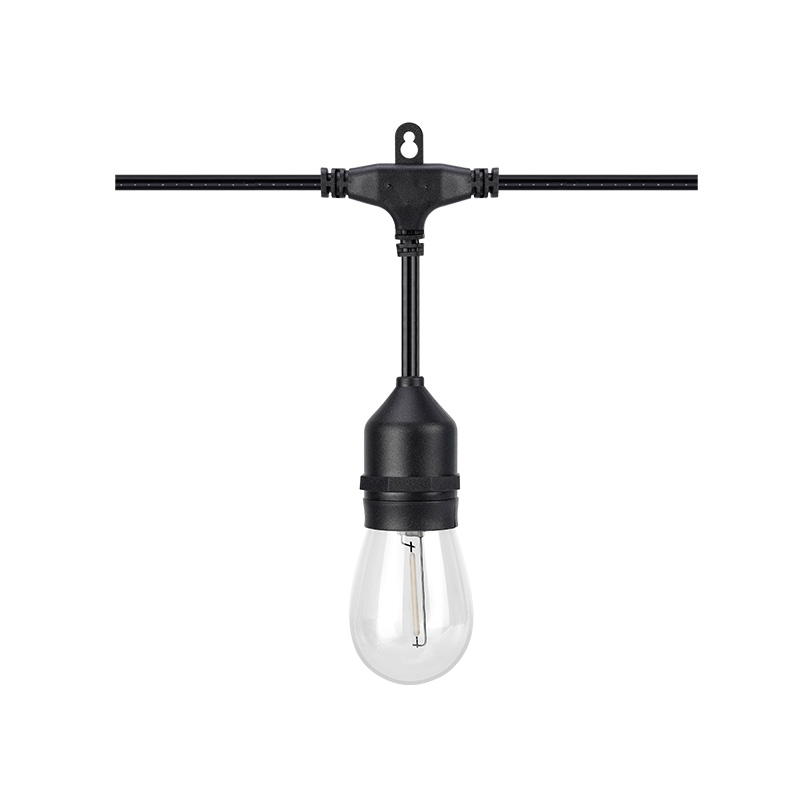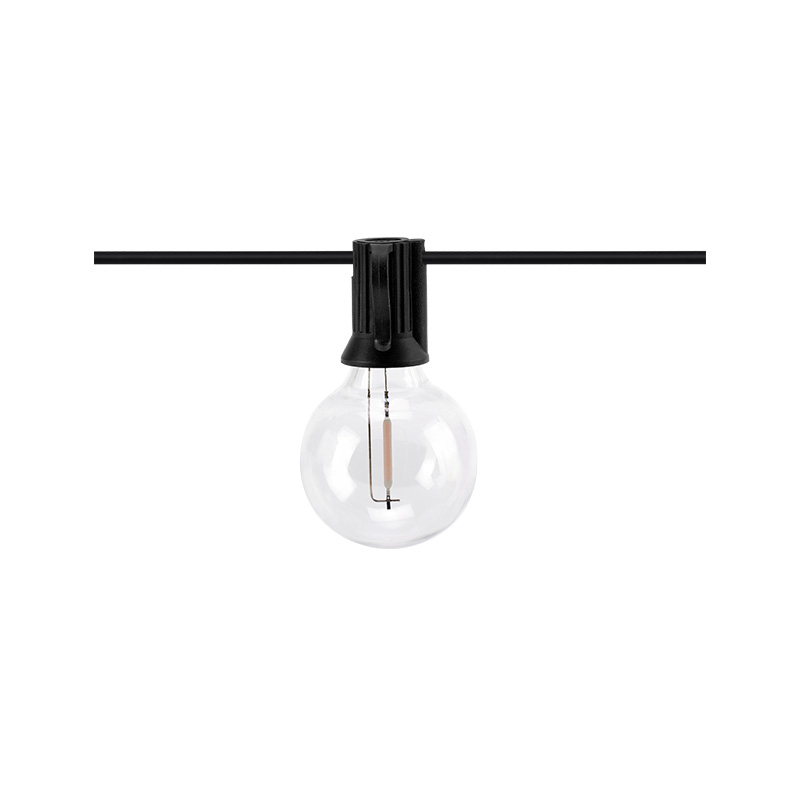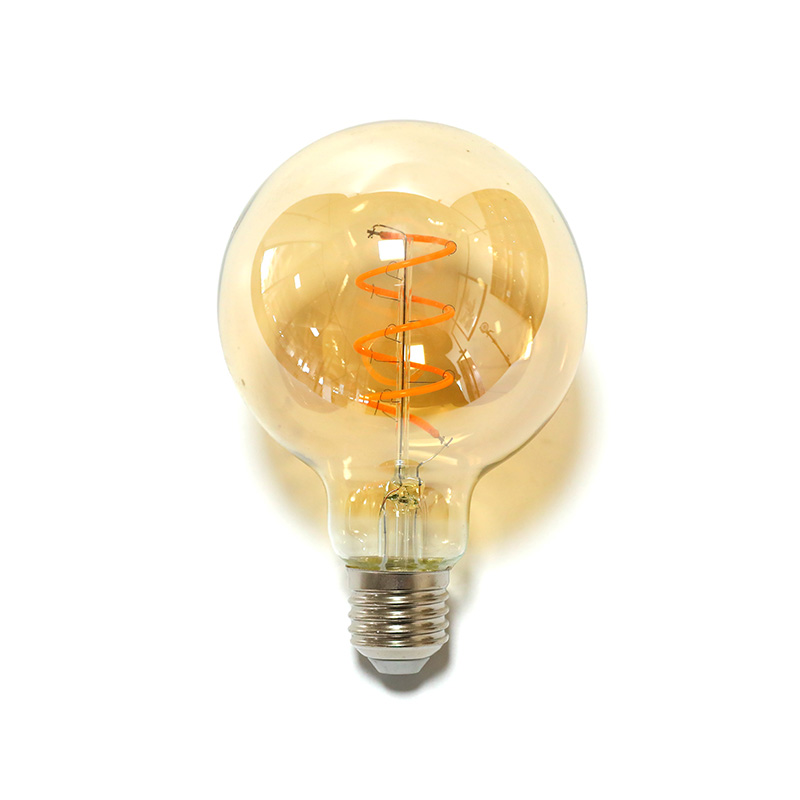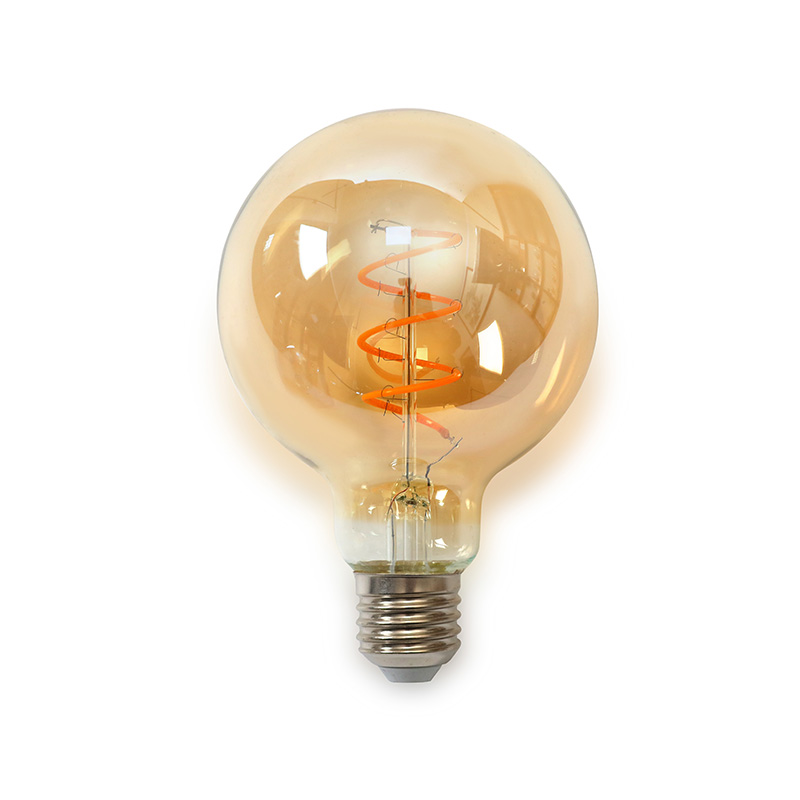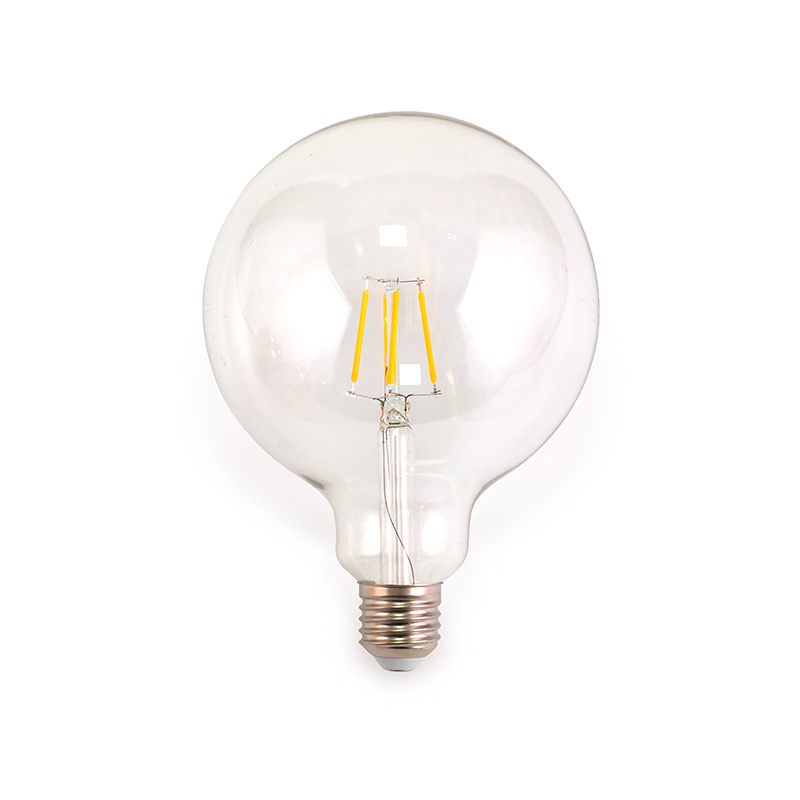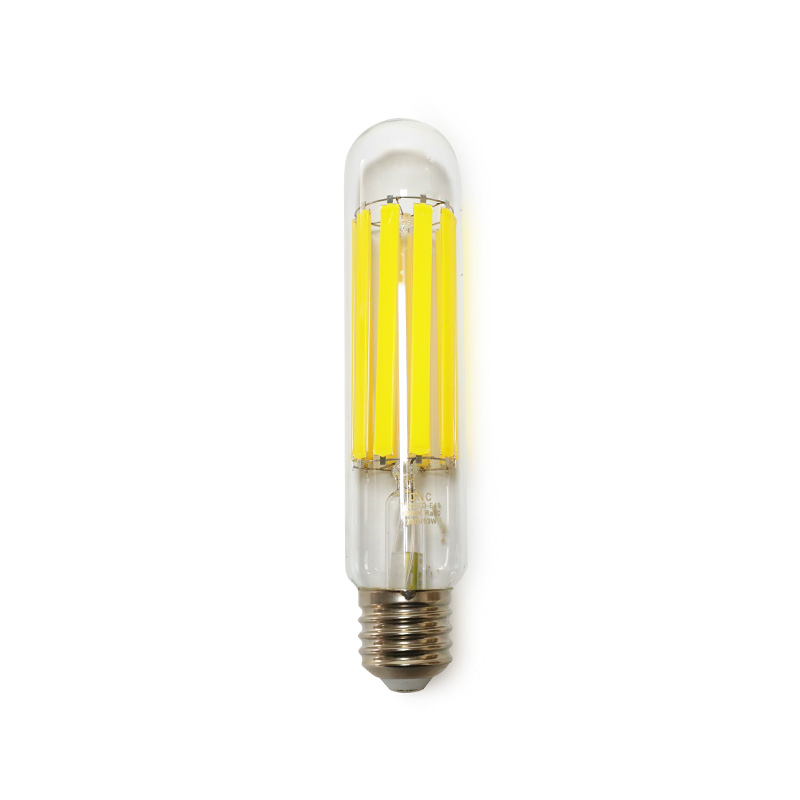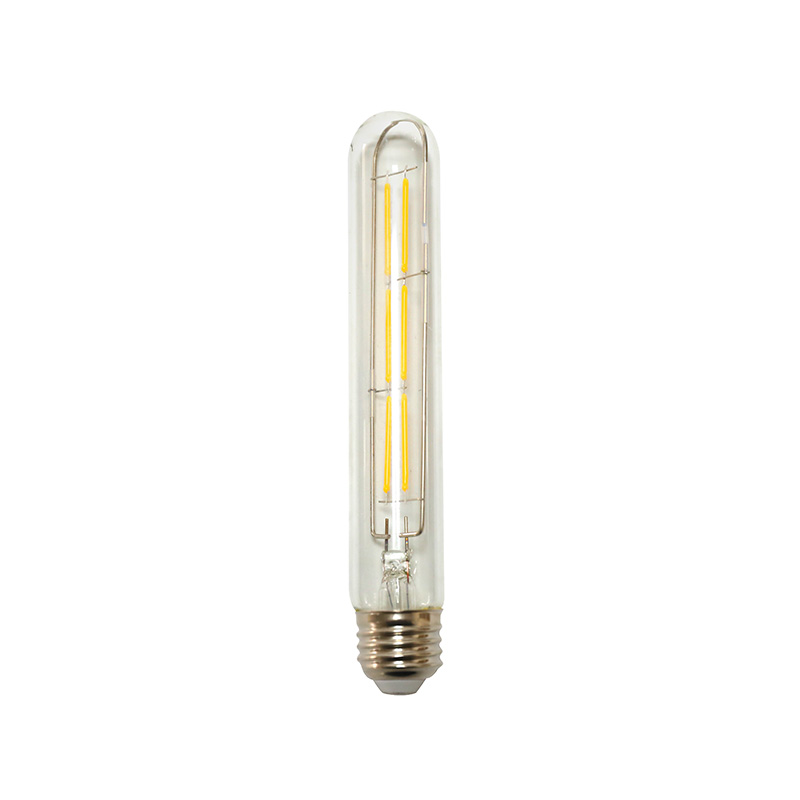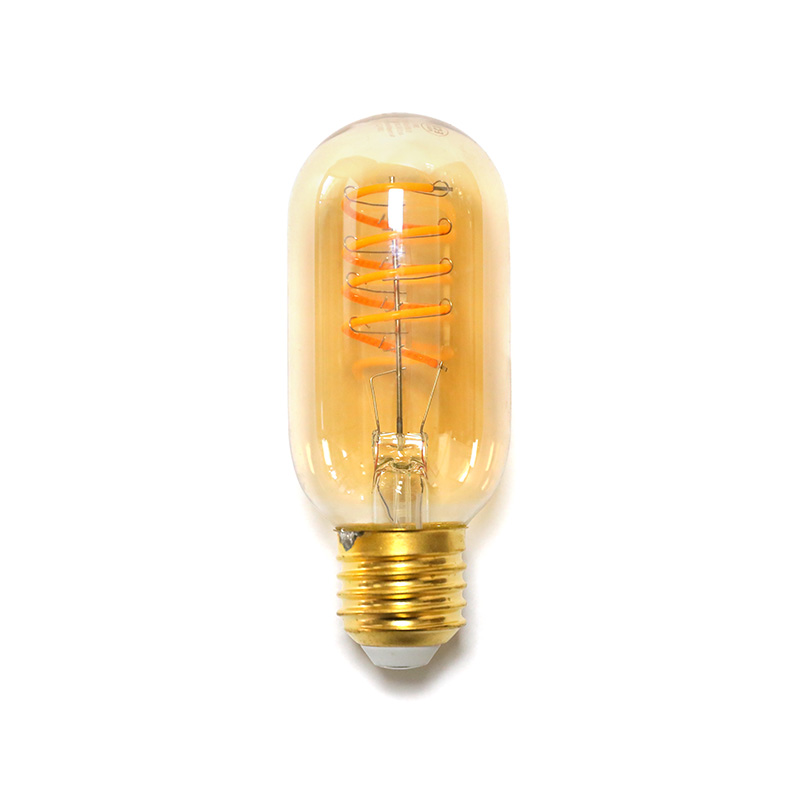In the fiercely competitive world of hospitality, every detail matters. From the menu curation to the background music, owners meticulously craft an experience designed to make patrons feel welcome, comfortable, and inclined to stay a little longer. While often overlooked, lighting is arguably one of the most powerful tools in this arsenal. It sets the mood, influences perception, and can even affect how food tastes. Amidst a sea of lighting options, one classic choice has made a dramatic comeback: the filament light bulbs.
This isn’t the inefficient incandescent of old, but its modern, more sophisticated descendant. Today’s filament bulbs, particularly LEDs, are engineered to provide more than just light; they provide an atmosphere.
The Science of Atmosphere: Why Warm Light Feels Welcoming
To understand the power of filament bulbs, we must first understand the fundamentals of light temperature, measured in Kelvins (K).
Cool Light (3500K-5000K+): This is a bright, blue-white light that mimics daylight. It’s energetic, alerting, and excellent for tasks requiring focus. Think hospitals, office buildings, and grocery stores. In a restaurant, cool light can feel sterile, unflattering, and rushed.
Warm Light (2000K-3000K): This is a soft, amber, or golden-white light. It mimics the gentle glow of a sunset or the flicker of a flame. Warm light signals to our brain that it’s time to relax, unwind, and be social. It’s inherently comforting and nostalgic.
Filament bulbs are almost exclusively designed to emit light in the warm spectrum, typically between 2200K and 2700K. This is the foundational reason they are so effective at creating a cozy ambiance. This warm glow is a key component of effective restaurant lighting design and is central to achieving a cozy café atmosphere.
More Than Just Light: The Anatomy of a Filament Bulb
What sets modern filament bulbs apart isn’t just the color temperature; it’s the aesthetic. They are a blend of old-world charm and new-world technology.
The Vintage Aesthetic: Unlike standard LEDs that hide their diodes, filament bulbs proudly display their intricate, glowing filaments. These often mimic the shapes of original carbon filaments from the Edison era, creating a beautiful, sculptural element even when the bulb is off. This vintage ambiance lighting acts as a decorative piece, adding a layer of visual interest to a space.
The Warm Glow Effect: The combination of the warm Kelvin temperature and the clear glass bulb creates a radiant, inviting pool of light. This warm glow lighting is diffuse and gentle, reducing harsh shadows and casting a flattering light on patrons, food, and interiors. It’s the difference between a clinical examination and a intimate portrait.
Modern LED Efficiency: Today’s LED filament bulbs offer the best of both worlds. They consume a fraction of the energy of old incandescents, last for tens of thousands of hours, and emit very little heat. This is crucial in a restaurant setting where excess heat from lighting can affect both customer comfort and climate control costs. This makes them a cornerstone of sustainable restaurant lighting.
Why Restaurants and Cafés are Perfect for Filament Lighting
The goals of a hospitality venue align perfectly with the benefits of filament bulbs.
1. Creating Intimacy and Comfort:
The primary goal of any dining establishment is to make guests feel at ease. The low, warm light of filament bulbs naturally draws people in, encourages leaning across the table, and fosters conversation. It defines personal space and creates intimate nooks within a larger room, a technique known as pooling light for intimacy. This is far more effective than a uniformly bright overhead light that can leave guests feeling exposed.
2. Enhancing Food Presentation:
Warm light is incredibly flattering to food. It enhances the golden-brown hue of roasted meats, pastries, and fried foods, making them look more appetizing. It adds a rich depth to sauces and makes fresh herbs and red meats look vibrant. This warm lighting for food presentation is a subtle but powerful marketing tool—a well-lit dish is instantly more “Instagrammable,” encouraging social sharing.
3. Establishing Brand Identity and Theme:
The style of a filament bulb can reinforce a restaurant’s concept.
Industrial Chic: Exposed edison bulbs with twisted filaments in wire cage pendants are a hallmark of the industrial aesthetic.
Rustic Farmhouse: Vintage-style bulbs in mason jar fixtures or over a reclaimed wood bar enhance a cozy, rustic feel.
Modern Bistro: Sleek, clear LED filament bulbs in simple black pendants can offer a touch of vintage warmth within a more contemporary, minimalist design.
This use of decorative lighting for hospitality tells a story before a guest even reads the menu.
4. Encouraging Longer Stays and Increased Spending:
There’s a well-documented correlation between lighting and dwell time. Bright, cool light subconsciously signals efficiency and turnover—great for a fast-casual lunch spot, but not for a dinner destination where you want guests to order another bottle of wine or dessert. Warm, dim lighting encourages relaxation and languishing, directly translating to higher check averages. It’s a critical element of profitable restaurant design.

Practical Implementation: How to Use Filament Bulbs in Your Space
Simply screwing in a few filament bulbs isn’t a magic bullet. Successful implementation requires thoughtful design.
1. Layering is Everything:
Professional designers never rely on a single light source. They create a layered lighting scheme for depth. Filament bulbs are perfect for ambient and accent lighting.
Ambient Lighting: This is the general background glow. Use filament pendants or chandeliers to provide the base layer of warm light throughout the space.
Task Lighting: This is brighter, focused light for specific jobs, like reading a menu or chefs working in an open kitchen. While not typically filament bulbs, it’s crucial to ensure this layer is also warm-toned to avoid clashing.
Accent Lighting: This is used to highlight architectural features, artwork, or a beautiful back bar. Smaller filament bulbs or strategically placed fixtures can excel here.
2. Consider Fixtures and Placement:
The fixture you choose dramatically alters the effect.
Pendant Lights: Perfect over bars, individual tables, or booths. They physically lower the light source, enhancing the sense of intimacy and defining specific areas.
Chandeliers: A statement chandelier made with multiple filament bulbs can serve as a stunning focal point in a dining room.
Sconces: Wall sconces with exposed bulbs are excellent for adding warm light at eye level, washing walls with a gentle glow, and creating a rhythmic visual pattern in a corridor or along a wall.
Cord Systems: Flexible pulley or track systems allow for adjustable height, perfect for spaces that need to be reconfigured often.
3. Dimming is Non-Negotiable:
The ability to control light levels is paramount. A space that feels cozy and intimate at 7 PM might feel too dark at 2 PM during a lunch service. Installing a commercial-grade dimming system allows you to adjust the ambiance throughout the day. Crucially, you must use dimmable LED filament bulbs that are compatible with your dimmer switches to avoid flickering or buzzing.
4. Mix Bulb Styles:
Not all filament bulbs are the same. Play with different shapes (ST, G, tubular), filament patterns (squirrel cage, spiral, horseshoe), and even glass tints (clear, amber, smoked) to add visual texture and avoid a monotonous look.
Addressing Practical Concerns: Cost, Maintenance, and Light Levels
Are they bright enough?
This is a common concern. The key is to abandon the old mindset of measuring light by watts (which is power consumption) and focus instead on lumens (which is actual light output). A single LED filament bulb may only be 6 watts but can output 500+ lumens of warm, directional light. By using multiple bulbs in clusters or throughout the space, you achieve ample illumination without the harshness. Supplement with targeted task lighting where needed.
What about the cost?
While the upfront cost of a quality LED filament bulb is higher than a standard LED, the long-term savings are significant. Their incredible energy efficiency and long lifespan (often 15,000 to 25,000 hours) mean you’ll recoup the initial investment through lower energy bills and drastically reduced replacement costs and labor.
Maintenance and Longevity:
LED filaments are very durable. Because they emit minimal heat compared to incandescents, they are less prone to degrading other components. Opt for brands with good warranties and a stated lifespan in hours.
Conclusion: An Investment in Atmosphere
Choosing to light your restaurant or café with filament bulbs is not merely a decorative decision; it is a strategic one. It’s an investment in crafting a specific emotional experience—one of warmth, comfort, and nostalgia. In a world that is increasingly digital, fast-paced, and fluorescently lit, offering a haven of golden, gentle light is a powerful differentiator.
By understanding the principles of warm light, embracing the efficiency of modern LED technology, and implementing a thoughtful, layered design, you can harness the unique power of filament bulbs. They will illuminate not just your space, but the faces of your guests, the beauty of your food, and the unique character of your brand, encouraging patrons to settle in, relax, and return time and time again.

 English
English русский
русский